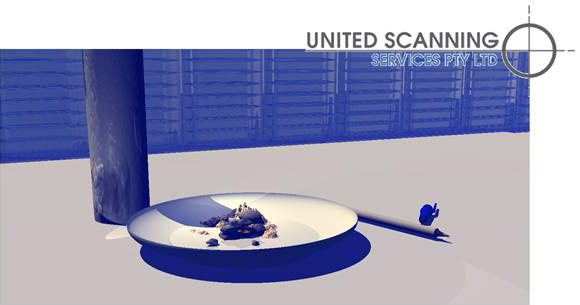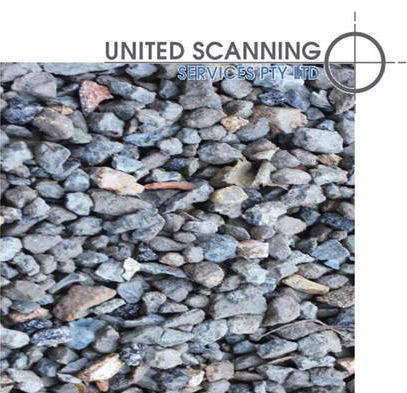Aggregate Testing
United Scanning has been hard at work in the construction industry for some time now, providing clients with high value, high quality advice about what lies under the soil, and particularly, about what lies within their concrete. Our specialisation in the use of Ground Penetrating Radar for use in the examination and inspection of concrete structures and surfaces is relied on by many of Perth’s most significant construction and civil engineering companies. Bridges, decks, piers, highways, slipways, slabs, beams, piles; if it is constructed of concrete, United Scanning are the specialists in answering questions about what is within them.
While locating cables and services, inspecting, testing and sizing reinforcement, checking for defects like cracks, honeycombing and other voids are among the areas we are most frequently consulted on, our experience and knowledge extends more broadly. We have seen some interest in aggregate testing and where United Scanning can provide insight into the composition and use of aggregate in concrete.
United Scanning have partnered with National Association of Testing Authorities accredited laboratory with a global reputation to enable us to provide our clients with clear information about the aggregates in use within their concrete. Whether our clients require aggregate testing and analysis prior to batch mixing and placement or whether they are seeking to verify aggregate characteristics in an older structure, United Scanning is able to provide answers.

Figure 1: Aggregate testing in a NATA Accredited Laboratory
In most concretes, the aggregate mix is easily the cheapest and most economical component other than water. This is one reason that most concretes have an aggregate content of that contributes between 60% and 75% to the final mixed volume. There is a measurable economic benefit in using higher percentages of aggregate as this can significantly reduce the overall cost of materials used in construction.
However, aggregate is not merely a filler that reduces the cost of the structure. The aggregate provides a degree of volume stability to the final product. The shrinkage potential of the cement paste (the mixed water and the cement) is relatively high compared to the aggregate. In most concrete construction projects, controlling the shrinkage is an important requirement. Concrete shrinkage and cracking in the new concrete are directly linked. Higher shrinkage means more cracking where the concrete is restrained from moving, and where the concrete can move freely, the shrinkage can result in significantly reduced contact with adjoining members in the structure with the corresponding impacts on utility, appearance and structural integrity. Thus, because increased proportions of aggregate result in reduced shrinkage potential, increasing aggregate is made doubly attractive.
However, as the maximum aggregate size decreases and proportion of aggregate rises, the amount of water and cement required to bond the aggregate together increases. The requisite volume of cement paste increases proportionally to the increase in the surface area of the aggregate that must be covered in cement paste. Thus finer aggregate which has a greater surface area for the same volume will require more cement paste. And as the proportion of cement paste in the concrete mix rises, the proportion of aggregate that can be in the same mix must fall correspondingly.

Figure 2: Aggregate of varying size for use in concrete
On the other hand, the use of aggregate that is on average too coarse, will result in a mix that while economic is very hard to mix, difficult to pour and place, challenging to consolidate and almost impossible to finish. All of these impose an economic cost on the project that will almost certainly out weigh the costs saved in using a more affordable blend of cement to aggregate.
Particle shape and surface texture also have an impact on the proportions of cement paste to aggregate in the mix. Aggregate particles that are rough, angular and elongated tend to require more water to make the concrete mix workable than similar sized smooth, rounded aggregates. And if more water is required in a mix, the proportion of cement in the mix will also need to rise to maintain the cement water ratio, reducing the aggregate content in the mix.
More importantly, aggregate that is weathered and unstable will have a negative effect on the strength, wear characteristics and life of the concrete. Some aggregate materials are more hard wearing and better suited to some purposes, others are softer, more easily cracked and worn and less useful in hard wearing environments. In addition, angular and rough aggregate has the impact of trapping air around it, increasing the void content in concrete. Higher void content in the concrete results in a lighter, and usually weaker, shorter life structure, reducing the compressive strength of the delivered product.
In short, aggregates have a significant economic impact on the cost of the materials in a concrete structure, but can also effect the ease with which the structure is constructed, the amount of cracking and shrinkage, the ease of finishing the product, the life and wear characteristics of the concrete and the strength of the structure.
Just of a few of the over 20 aggregate tests available through United Scanning include:
- Sieve analysis – A technique used to assess the proportions of particles in particular size ranges
- Flakiness testing – Main Roads (WA) (https://www.mainroads.wa.gov.au/Documents/FINAL%20DRAFT%20WA%20216.1%20-%202012.PDF) define the Flakiness Index as the percentage, by mass, of the particles whose least dimension is less than three-fifths of the mean dimension. It is measure of the proportion of flaky or easily broken particles in concrete that may reduce the strength of the concrete and this measure is particularly significant in use cases where the concrete may require a degree of flexibility
- Angularity number – This number provides an indication of the angularity of the aggregate and thus likely void content in a concrete produced using this aggregate. In this test, a quantity of single sized aggregate is placed into a container. The aggregate is then compacted in a prescribed manner and proportion of the aggregate that is void made clear by the amount the aggregate compacts
- Los Angeles abrasion test – This test method is used to indicate aggregate toughness and abrasion characteristics
Attrition test – This test is carried out to measure the resistance of the aggregate to wear and typically conducted by tumbling the aggregate and measuring the amount of the material that has been reduced to in size to qualify as fines
